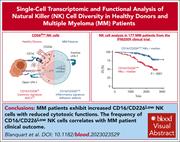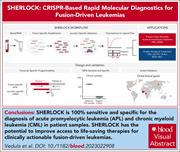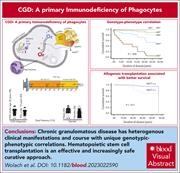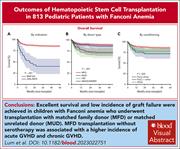Issue Archive
Table of Contents
BLOOD COMMENTARIES
REVIEW ARTICLE
Novel functions for von Willebrand factor
von Willebrand factor (VWF) is a large multimeric plasma glycoprotein that plays well-established roles in hemostasis. Recent discoveries indicate that the importance of VWF transcends hemostasis and that there are many additional ligands for VWF beyond factor VIII, collagen, and platelet integrins. In this timely review, Atiq and O’Donnell put into perspective these recent findings, discussing how VWF also plays key roles in inflammation, wound healing, angiogenesis, and some nonhemostatic diseases.
CLINICAL TRIALS AND OBSERVATIONS
Clinical networking results in continuous improvement of the outcome of patients with acute promyelocytic leukemia
Clinical Trials & Observations
Implementation barriers that diminish the potential benefits of highly effective therapies are common across the globe and may require concerted intervention to resolve. Koury et al describe the sustained improvement in outcomes for patients with acute promyelocytic leukemia in 5 Latin American countries from 2005-2020 due to the work of the International Consortium on Acute Leukemia. The authors report the long-term results from 806 patients in a prospective trial, identifying the key changes to practice that now enable outcomes for favorable-prognosis patients commensurate with those in high-income countries.
IMMUNOBIOLOGY AND IMMUNOTHERAPY
NK cells with adhesion defects and reduced cytotoxic functions are associated with a poor prognosis in multiple myeloma
Clinical Trials & Observations
Escape from immune surveillance is a hallmark of symptomatic multiple myeloma (MM). Blanquart and colleagues compared bone marrow and peripheral blood natural killer (NK) cells from patients with MM and healthy donors. The authors reveal a contraction of CD56dim cytotoxic subsets and expansion of late-stage “activated/inflammatory” CD16/CD226Lo NK cells in MM. Leveraging different single-cell technologies, ex vivo studies, and clinical trial datasets, they demonstrate how NK cell dysfunction may negatively impact survival of patients with MM.
LYMPHOID NEOPLASIA
Multiomics analysis of IgM monoclonal gammopathies reveals epigenetic influence on oncogenesis via DNA methylation
Brief Report
The pathogenesis of Waldenström macroglobulinemia (WM) is unknown. Chohan and colleagues report on multiomic comparative analyses (DNA methylation, whole exome, and RNA sequencing) of WM, IgM monoclonal gammopathy of undetermined significance (MGUS), and normal controls, identifying distinct patterns of transcriptional and epigenetic regulation associated with WM rather than MGUS. The authors’ data highlight the importance of epigenetic influence on cell signaling and inflammation-response pathways that differs between these entities.
MYELOID NEOPLASIA
CRISPR-based rapid molecular diagnostic tests for fusion-driven leukemias
PHAGOCYTES, GRANULOCYTES, AND MYELOPOIESIS
Genotype-phenotype correlations in chronic granulomatous disease: insights from a large national cohort
Clinical Trials & Observations
Chronic granulomatous disease is a primary immunodeficiency disorder of phagocytes (neutrophils, eosinophils, monocytes/macrophages) due to inherited mutations in any of the genes encoding the protein components of the nicotinamide adenine dinucleotide phosphate reduced oxidase. Wolach et al report the outcomes of 110 patients with this rare disease that predisposes patients to recurrent infections and hyperinflammatory complications, identifying clear genotype-phenotype correlations and confirming the importance of allogeneic hematopoietic stem cell transplantation for those with severe disease.
RED CELLS, IRON, AND ERYTHROPOIESIS
Foxo1 is an iron-responsive transcriptional factor regulating systemic iron homeostasis
Foxo1 is a transcription factor commonly associated with glucose metabolism. Xu et al reveal that Foxo1 also regulates the response of hepatocytes to high iron conditions and in iron overload by activation of hepcidin transcription. The authors’ data help explain how fluctuations in serum iron levels modulate the expression of hepcidin, a key iron-regulatory hormone that controls iron export from the gut and storage tissues.
TRANSPLANTATION
Outcomes of hematopoietic stem cell transplantation in 813 pediatric patients with Fanconi anemia
CME
Clinical Trials & Observations
Fanconi anemia (FA) is the most common inherited bone marrow failure syndrome and carries a very high risk of myeloid neoplasm. While hematopoietic stem cell transplantation (HSCT) is curative, toxicity has limited its success because of the additional sensitivity of tissues to genotoxic conditioning and damage from graft-versus-host disease. In this month’s CME article, Lum and colleagues report that in the modern era, excellent outcomes can be expected for pediatric and adolescent patients with FA undergoing HSCT. These data support the use of HSCT from an HLA-matched family or unrelated donor as first-line treatment in patients with FA when cytopenia occurs and before the onset of clonal evolution.
LETTER TO BLOOD
BLOOD WORK
ERRATA
CONTINUING MEDICAL EDUCATION (CME) QUESTIONS
-
Cover Image
Cover Image
![issue cover]()
Perls Prussian blue staining shows iron accumulation in the liver tissue of mice treated with a 2-week high-iron diet. Parenchymal iron overload can be observed in the periportal region. See the article by Xu et al on page 1314.
- PDF Icon Front MatterFront Matter
- PDF Icon Table of ContentsTable of Contents
- PDF Icon Editorial BoardEditorial Board
Advertisement intended for health care professionals
Email alerts
Advertisement intended for health care professionals










